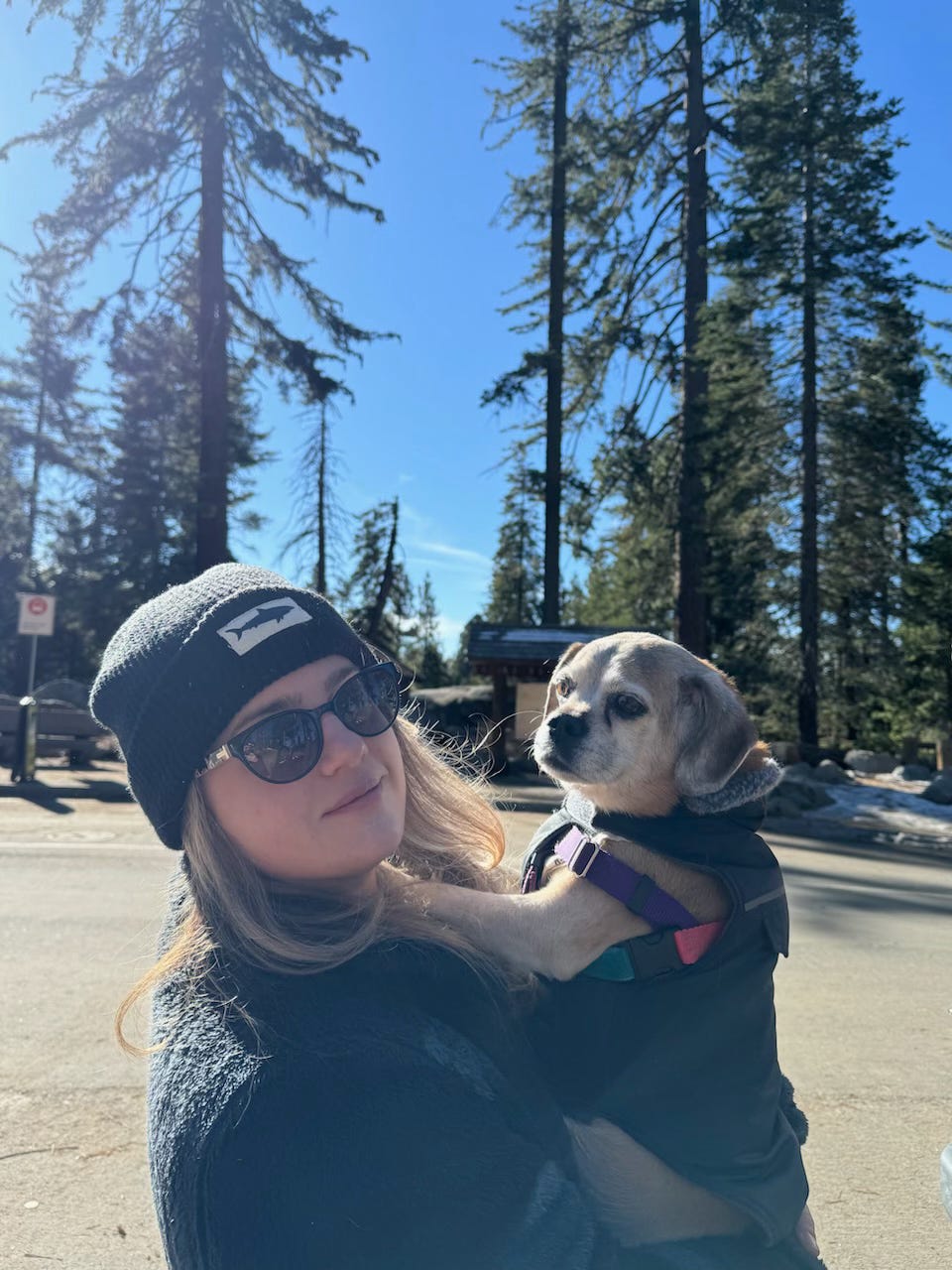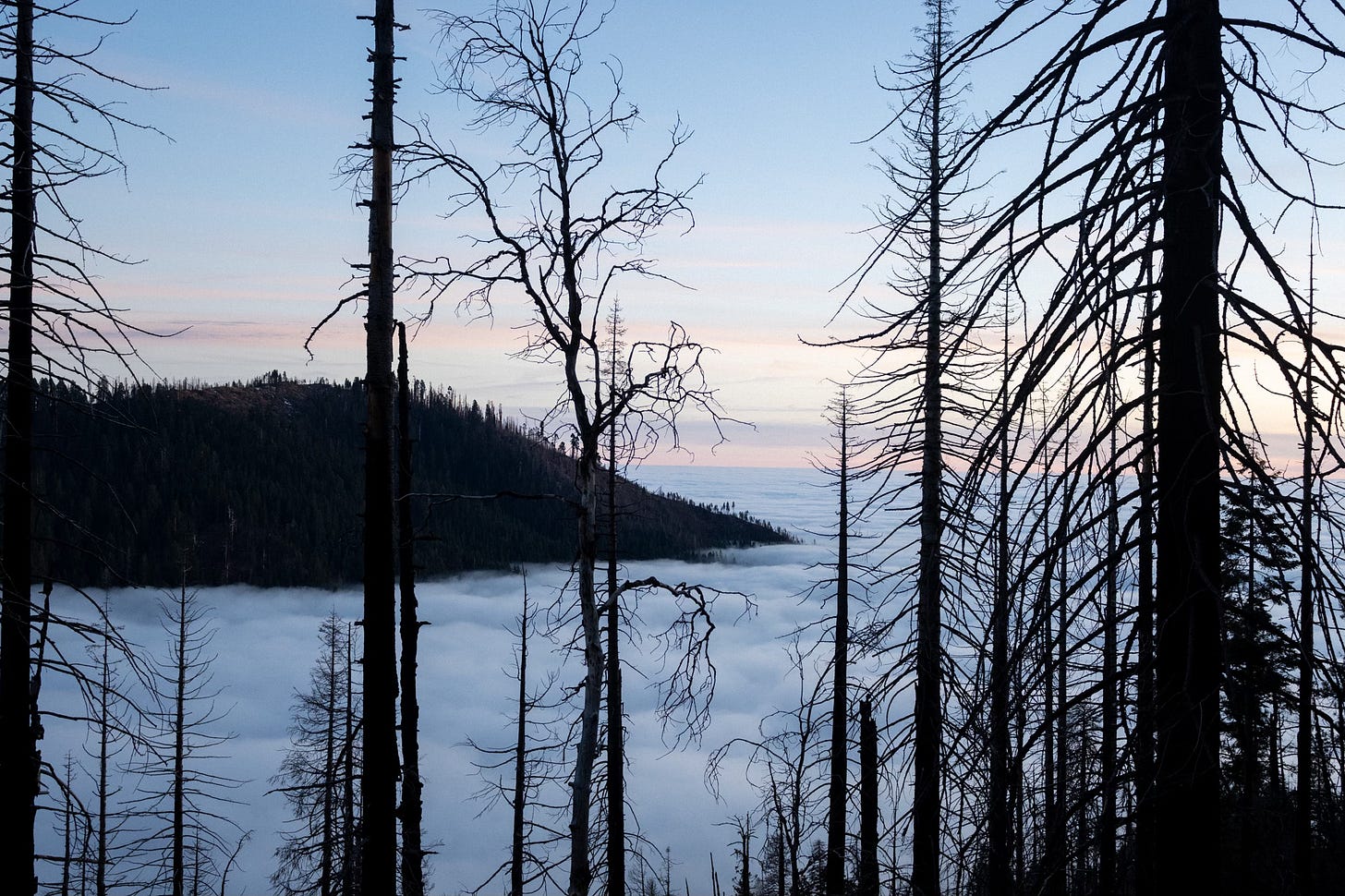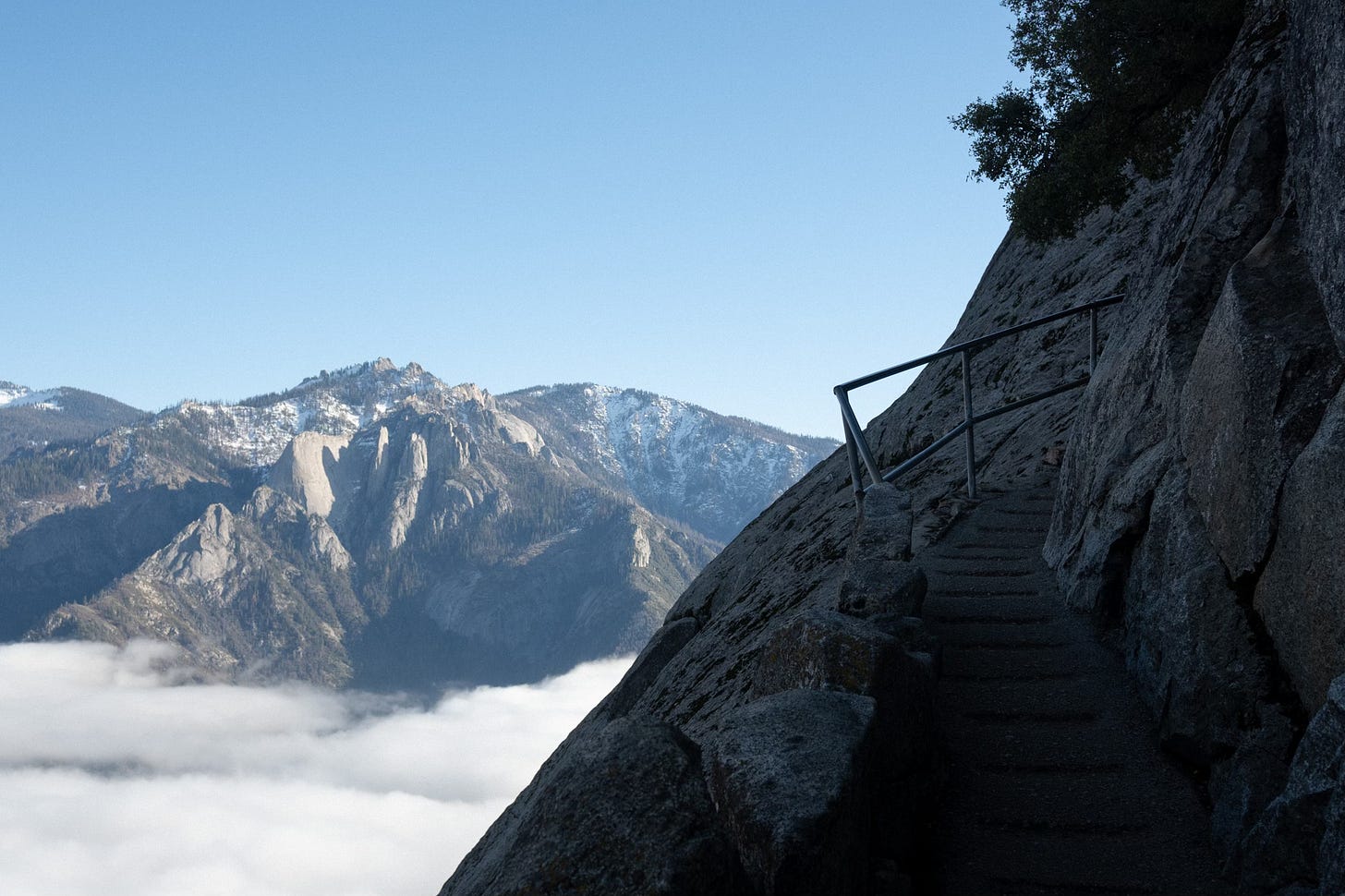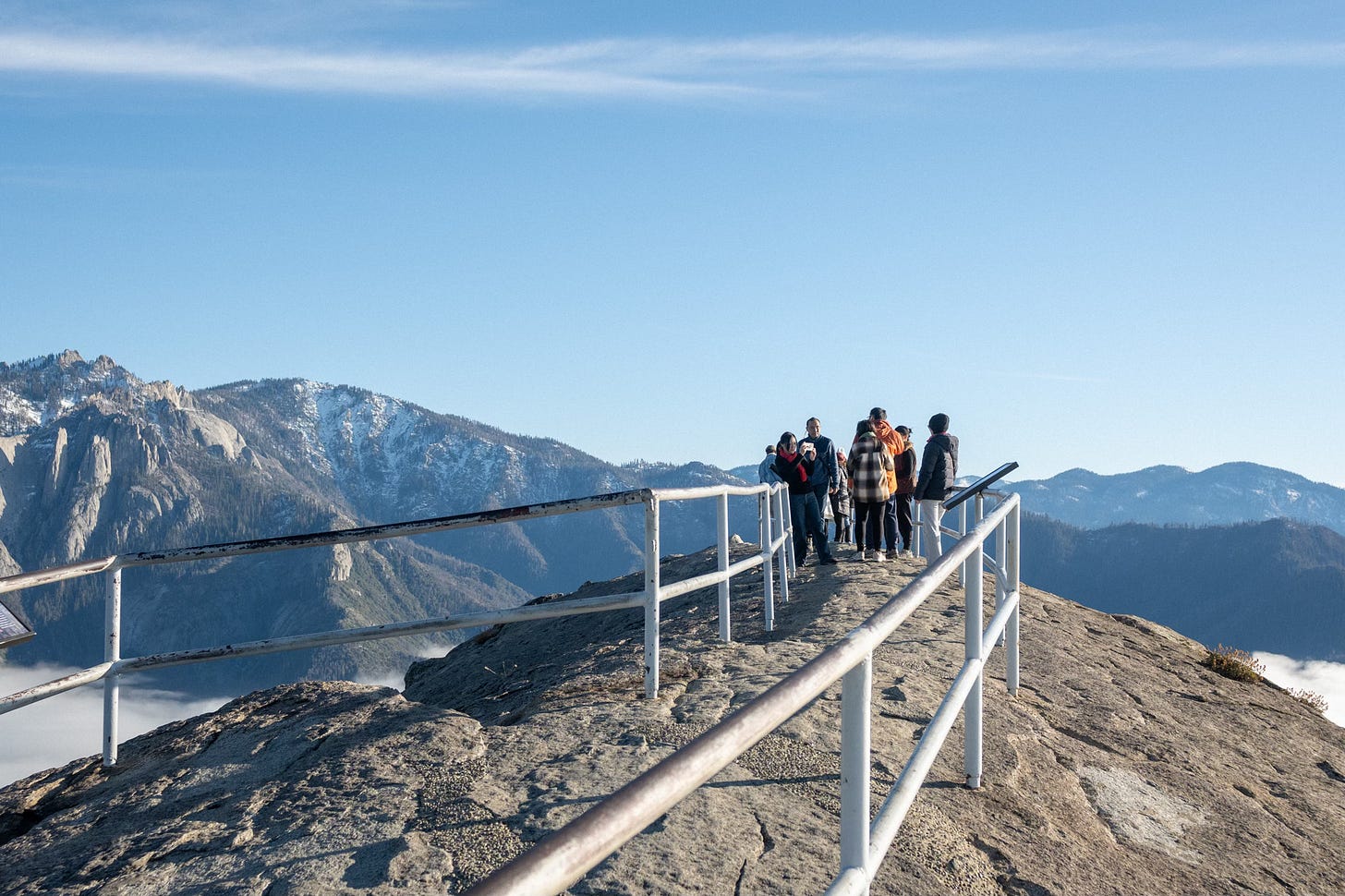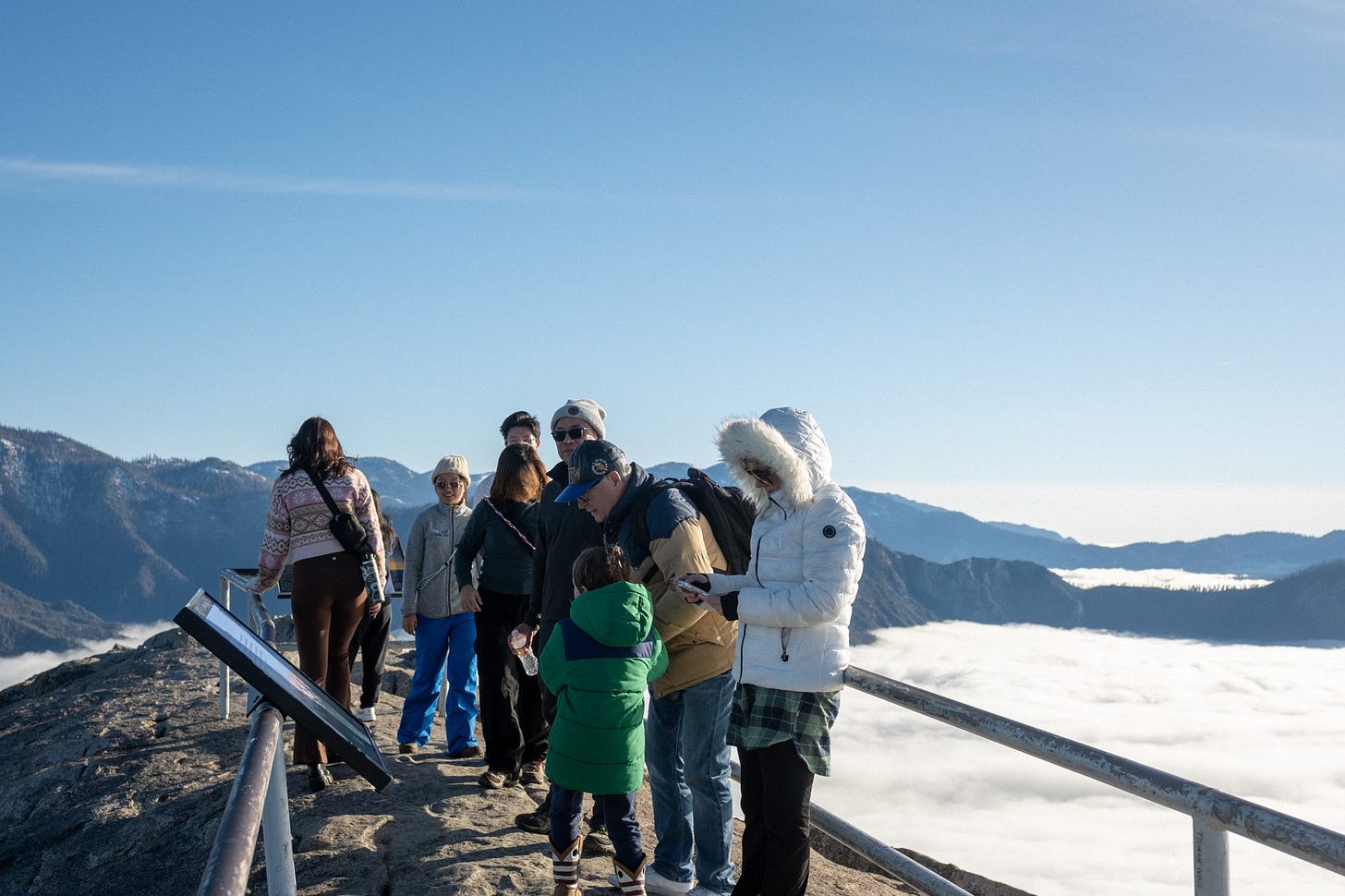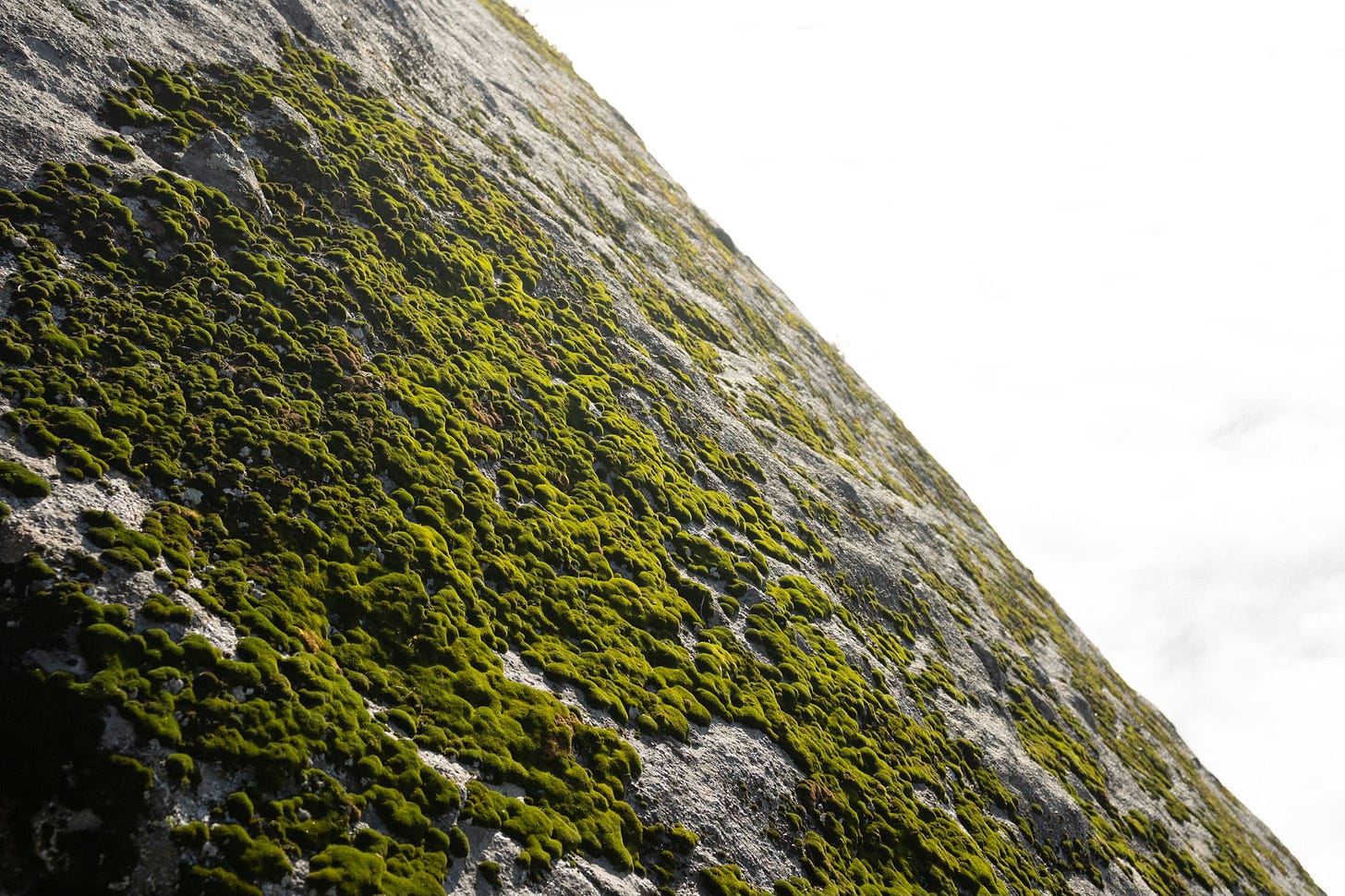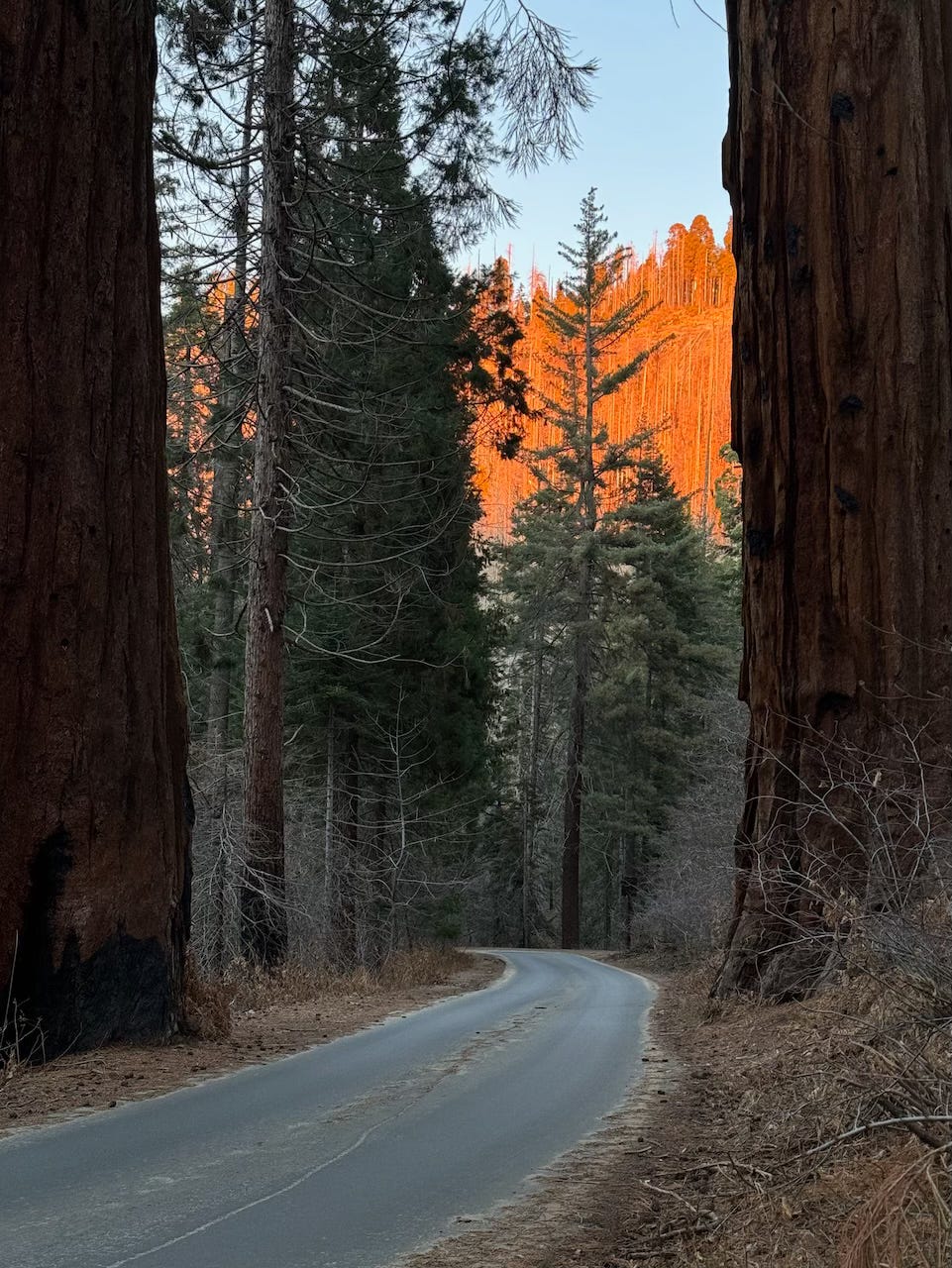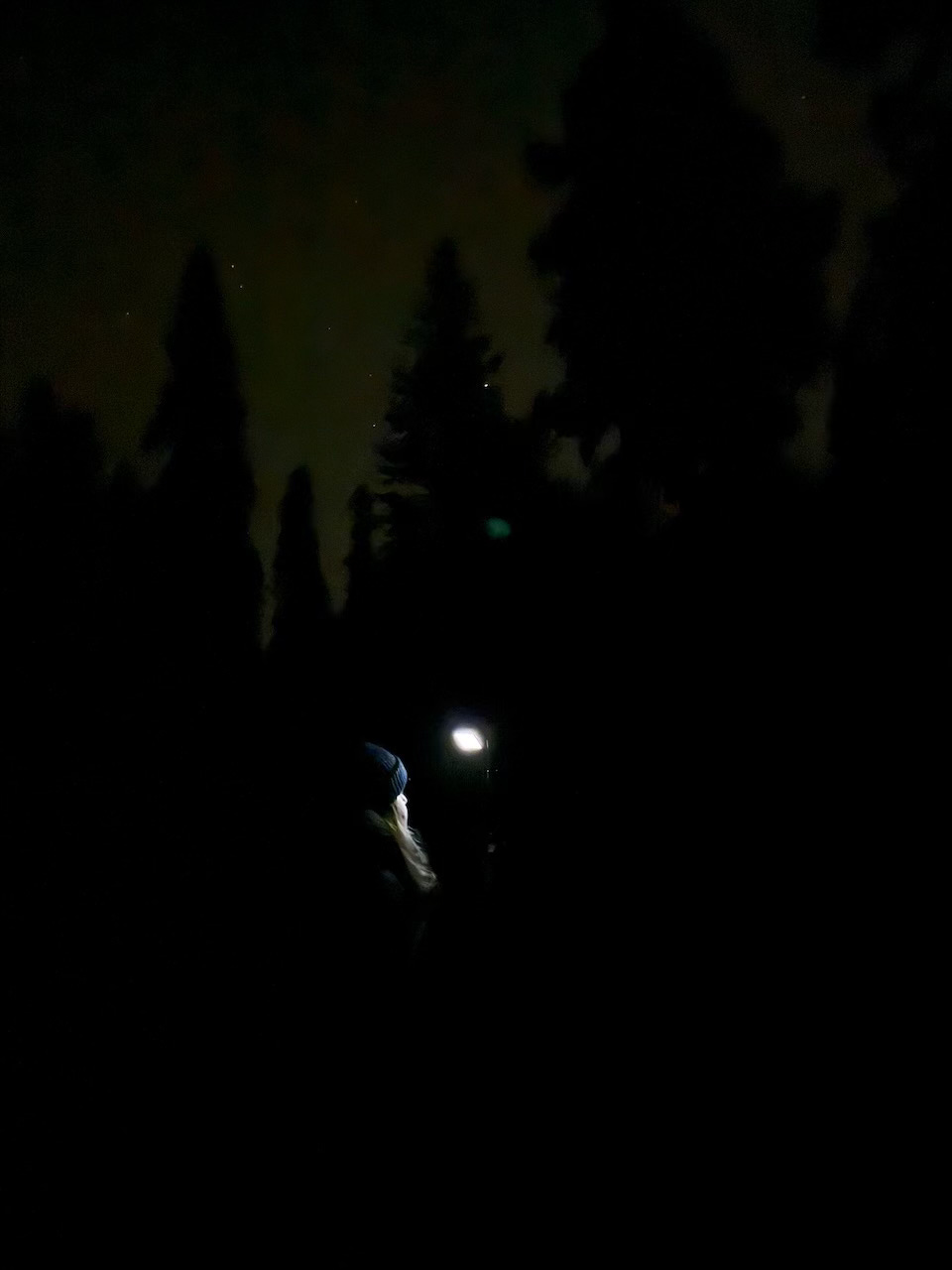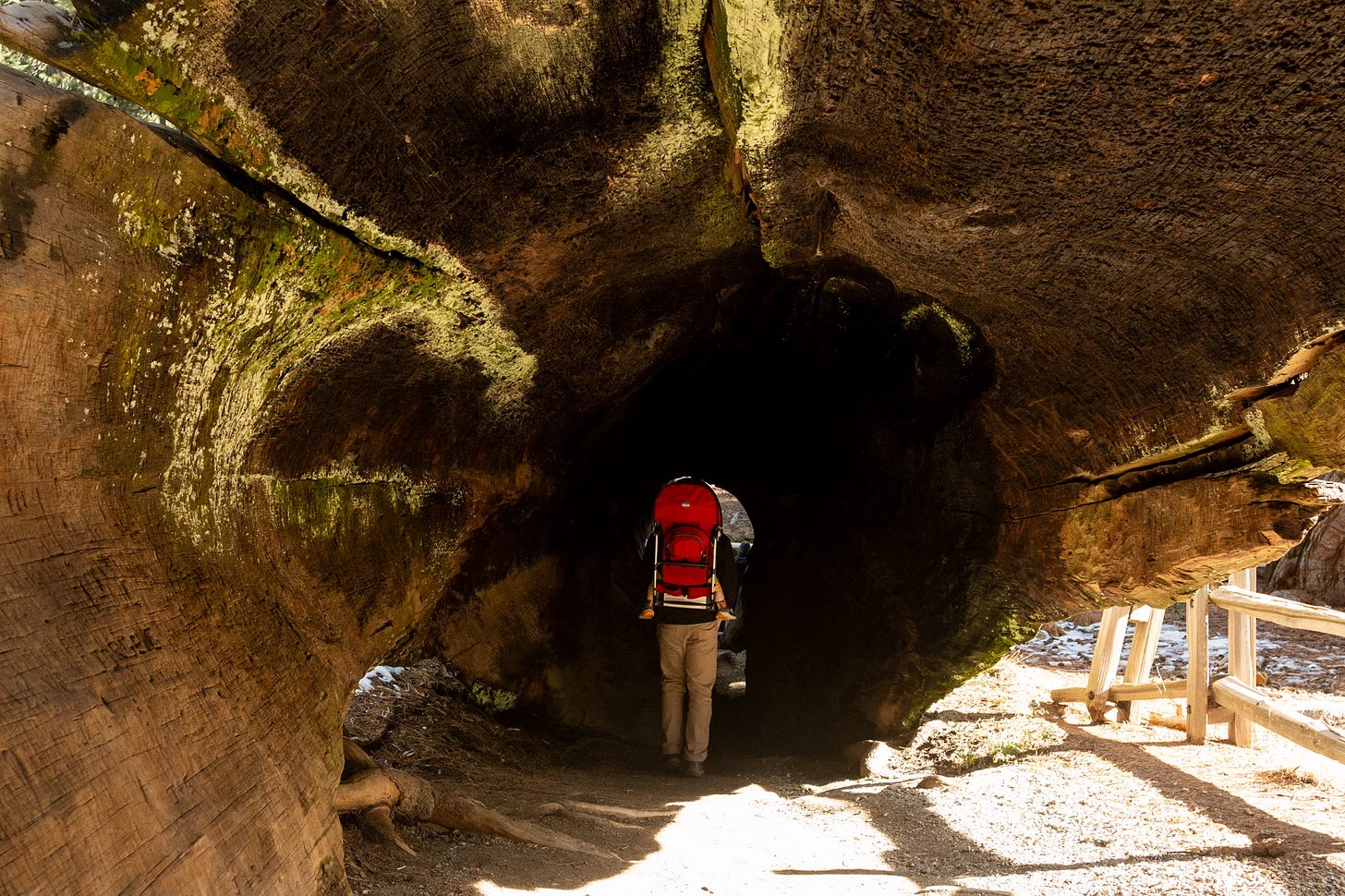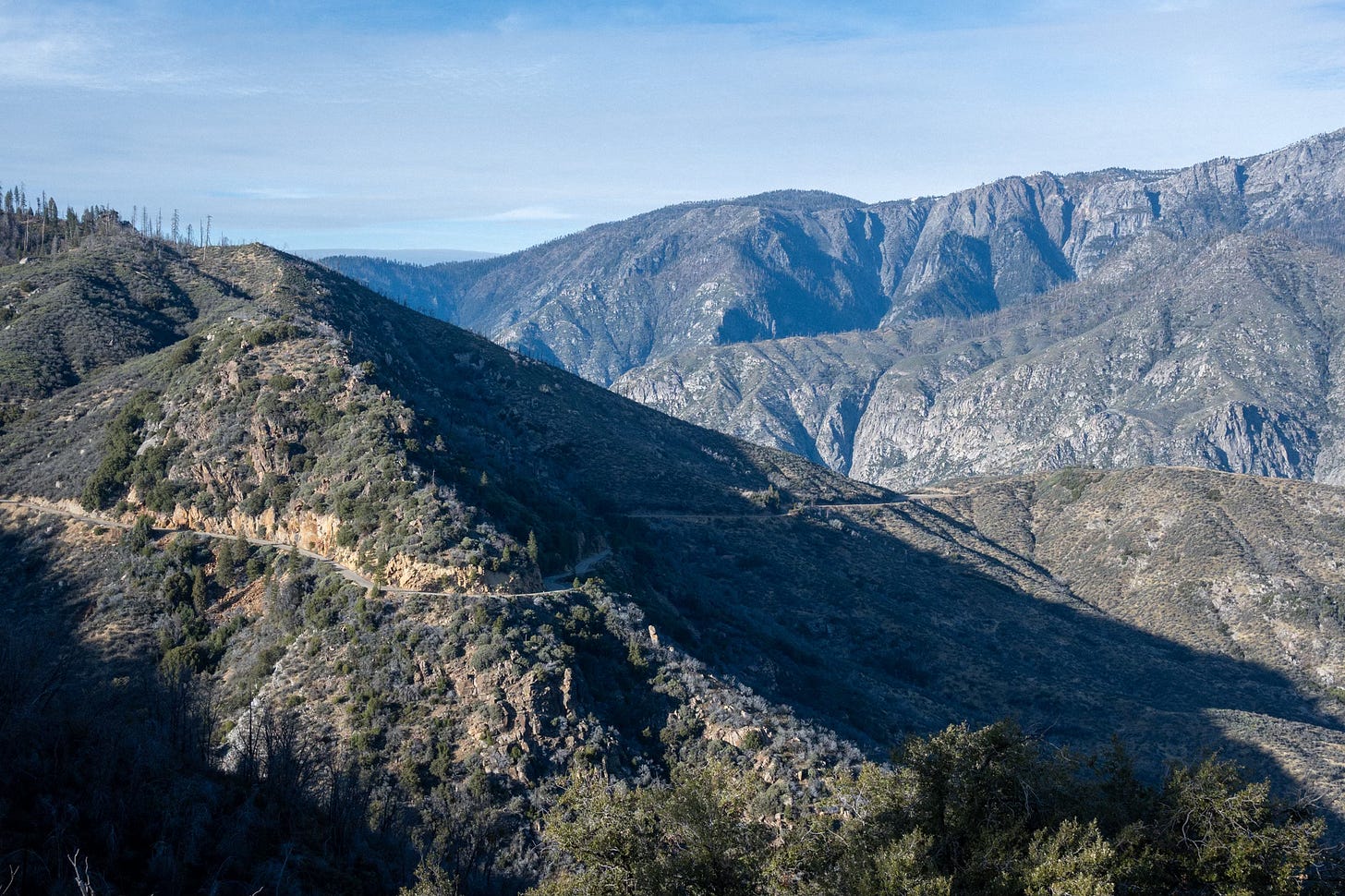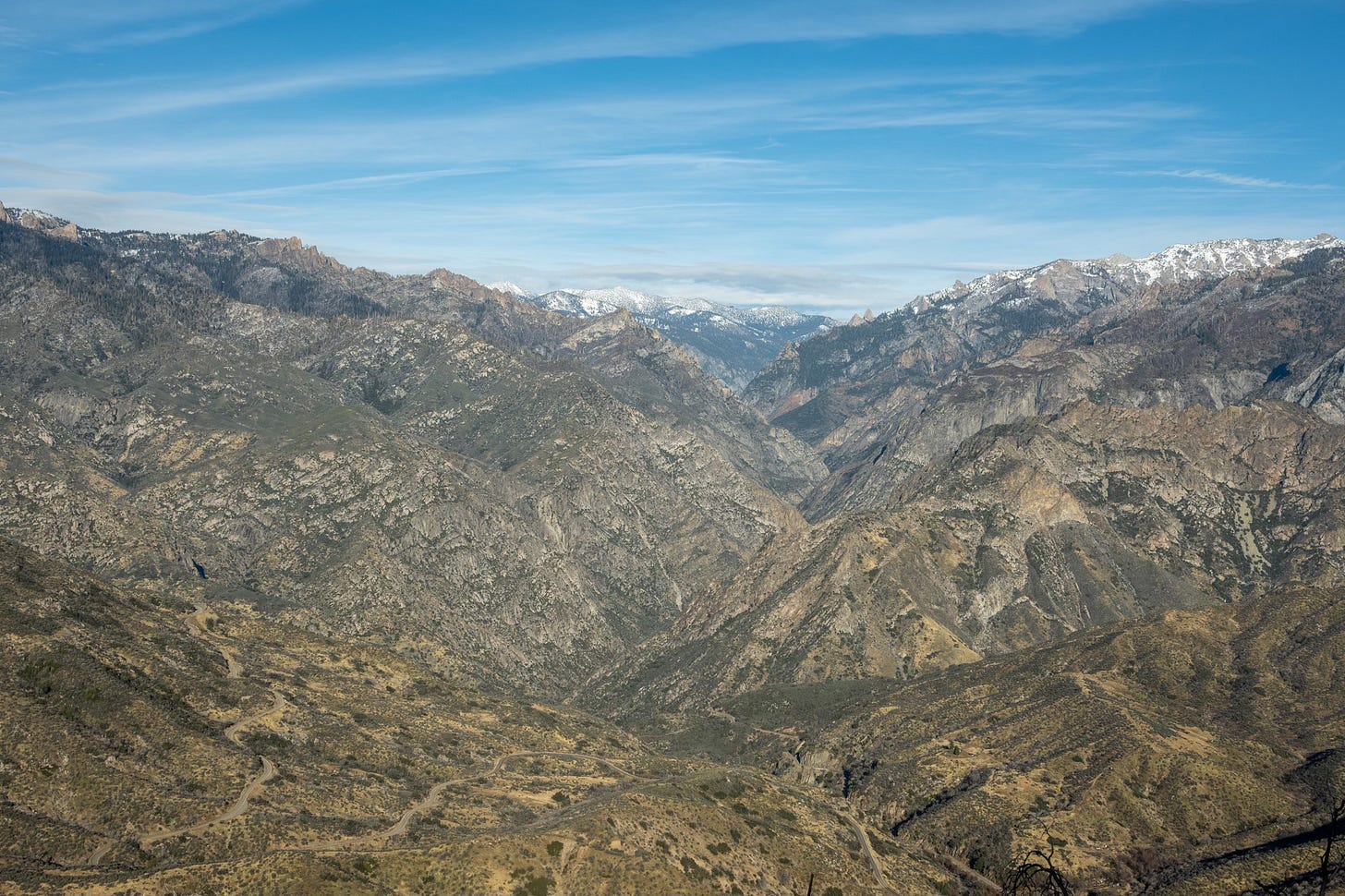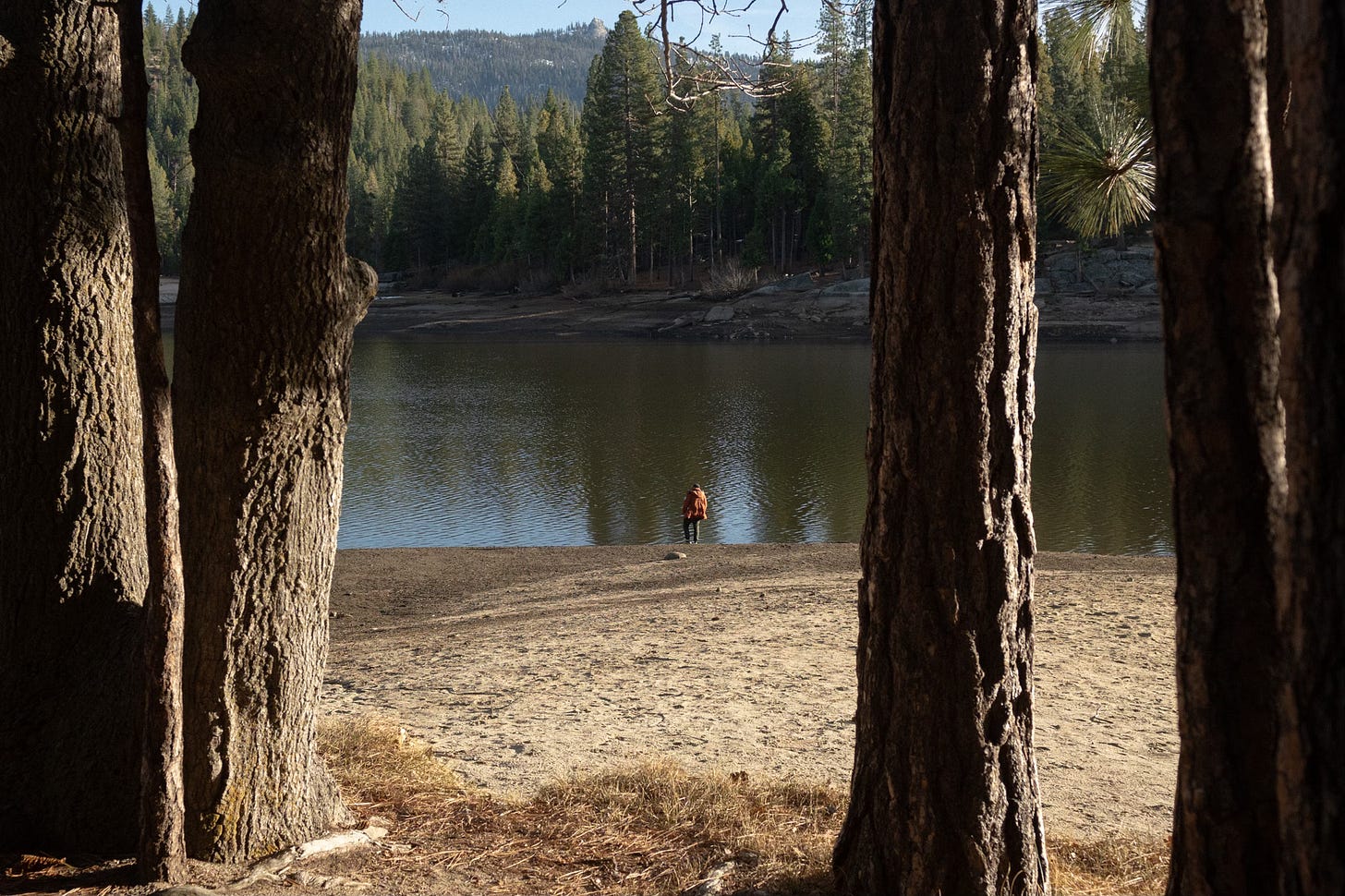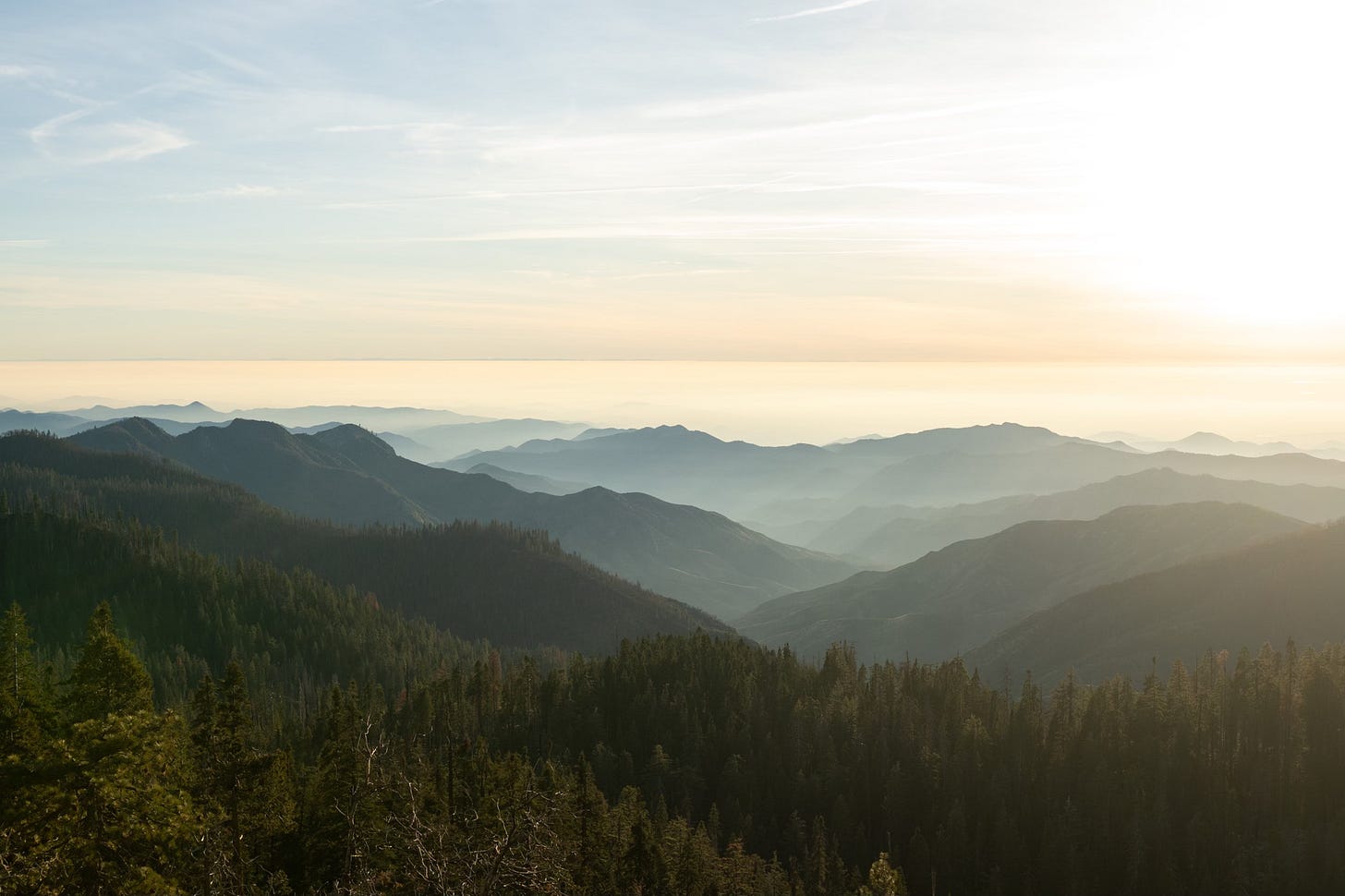Photos from the road: Sequoia NP
I hope you enjoyed the holidays—Meghan and I got away from the chaos with a little trip to the woods
It’s 2025 🎉 There are 50 of you now reading In the Cypress Studio regularly, which means more to me than you could imagine. My goal is to use this newsletter as a forcing tool to write more content, edit more photos, and make more prints. This should be the year we see Cypress Magazine get published—so if you’re here, consider yourself on the list for issue no. 01 👀
I hope you’re feeling refreshed and fulfilled after these last two beautiful weeks of no plans and no expectations. In this house, a lull in the calendar for that long means a spontaneous road trip. So Meghan and I snuck off to Sequoia and King’s Canyon National Parks for New Years. And since we couldn’t spend the holidays away from Albert, we opted to stay at the park’s dog friendly lodge. It was a treat to wake up within the boundaries of the park with a hot shower.
We hoped the holiday season and the potential for snow would keep the crowds away and make for a calm trip through the woods. Conditions ended up being ideal. Snow came on Christmas Eve and again on the day after our departure. So while we did miss out on picturesque, snow covered forest floors, we also dodged the rapidly changing conditions that make Sequoia the most dangerous National Park to visit during the winter. Our trip landed right in the middle: cold enough for Albert to need a fleece lined vest and quiet enough to be the only visitors out after dark taking photos.
Into the clouds
I’ve driven through snowstorms, rainstorms, and fog so dense that you can’t see the lines of the road. The fog climbing up to the park was unlike anything I’ve ever experienced. Meghan and I had a full hour of winding 6000 feet up a mountain at a crawl with our flashers on and our fingers crossed. It was worth it though.
The views from above the clouds were unbelievable. Looking out over the valley was like looking out at the ocean. Waves of clouds were rolling as far as your eye could see and lapping at the mountain top islands just off of the ridge line. And the whole time, we were surrounded by some of the largest trees known to man. It was magical.
Day 1: Sequoia National Park
Sequoia was the second established National Park in the US. In September of 1890, President Benjamin Harrison signed legislation to protect the trees from logging. And only a week later, the four square miles of General Grant National Park was established. These were the first parks established with the sole intent to protect a living organism. Eventually, General Grant was consumed by King’s Canyon National Park and all of this parkland started being managed jointly under the name Land of the Giants.
These parks are wild. If you’re like me, you assumed parks named after trees would be all about… well, trees.
The Land of the Giants is home to General Sherman, which is the largest* living tree in the world. But it also contains Mount Whitney (the highest point in the contiguous United States, standing at 14,505 feet), The Great Western Divide (which has multiple peaks over 13,000 feet), and canyon walls higher than 8,200 feet (which is uhhh, deeper than the Grand Canyon). Also, 96.7% (over 800,000 acres) of the park is classified as wilderness and can only be accessed via backcountry hiking or the John Muir Trail that casually runs through the park. And if this portion of the newsletter reads like a fact book, it’s because I refuse to move on until you experience the same surprise that Meghan and I shared while reading park info boards.
So anyway, the park has a lot of big stuff. And we climbed a big rock.
Moro Rock
This was another “let’s find out what it is when we get there” type of moves. The road to Moro Rock is typically closed in the winter. It’s small and winding and not plowed when there’s snow, so we lucked out with the weather in getting these views.
Climbing Moro Rock is not for those afraid of heights. The 350 steps carved into the sides of this granite tower are lined in some places with hand railing and in others with cemented rocks that are only about ankle height. And what gets most people about halfway up this single track trail, riiiight as you’re sucking in to let someone squeeze by you, is that you started the climb at 6,470 ft of elevation and are already out of breath by step number 160.
The views are absolutely worth it though.
Remember those clouds that we drove through on the way up? Moro Rock gives you a literal 360˚ view of the park and the clouds settling into every valley crevice. On a good day, you can see The Great Western Divide and the Coastal Range from this point.
And you knew it wasn’t going to be a Cypress newsletter without a detailed picture of a good rock. This time it isn’t layers—the northern face of Moro is covered in this lichen and moss.
The Four Guardsman
Meghan and I drove right through the Four Guardsman split without realizing it the first time. There aren’t signs and it isn’t marked on the National Geographic maps that we use to navigate parks. We found them via this 90’s looking blog about famous giant redwoods and remembered the split in the road that we had taken the day before. These four giants are right on General’s Highway and obvious once you know to look for them.
Funnily, once we pulled over and started crouching along the road to take photos, others began slowing way down and taking photos with their phones from the car.
Half the park is after dark
We went back out for photos after dinner. Night photography is something Meghan and I are trying to learn together through trial and error. On a clear night in Sequoia, the Milky Way is visible to the naked eye and framed by the silhouettes of giant tree tops.
You’ll have to wait for the night photos article in Cypress Magazine for those shots (aka, we haven’t edited them and don’t know if they came out). But I couldn’t help but sneak in this photo of Meghan taking photos of the Sentinel Tree in below freezing weather at night.
*Hey so I’m going to rant about General Sherman being the biggest tree in the world for a second. Calling General Sherman the biggest tree is hilarious to me. It’s the ‘biggest’ tree that we know of** when measured by mass***. Like, this is the funniest way to own a record. General Sherman is not the tallest tree. And it’s not the widest tree. And it’s not the oldest tree. It is the largest tree if you were to add up the total mass of the tree and compare that to all other trees in the world. It’s valid, but like, come on.
**And AND, we have documentation that Hyperion, which is a sequoia in Redwood NP, is the tallest tree in the world. But if you read The Wild Trees, you’ll find out that Michael Taylor (the co-discoverer of Hyperion and discoverer of Helios and Icarus) knows that there are taller trees out in the uncharted groves of Northern California and Oregon. We just haven’t found and formally documented them. So if we’re certain the tallest tree isn’t actually the tallest tree, how are we claiming to know what the ‘largest’ tree is??
Day 2: King’s Canyon National Park
Only the Grant Grove portion of King’s Canyon is open during the winter. We’ll head back to see Cedar Grove and the actual canyon one day during a summer season—but only having one side of the park available gave us extra time to wander around the grove and to find a less travelled road.
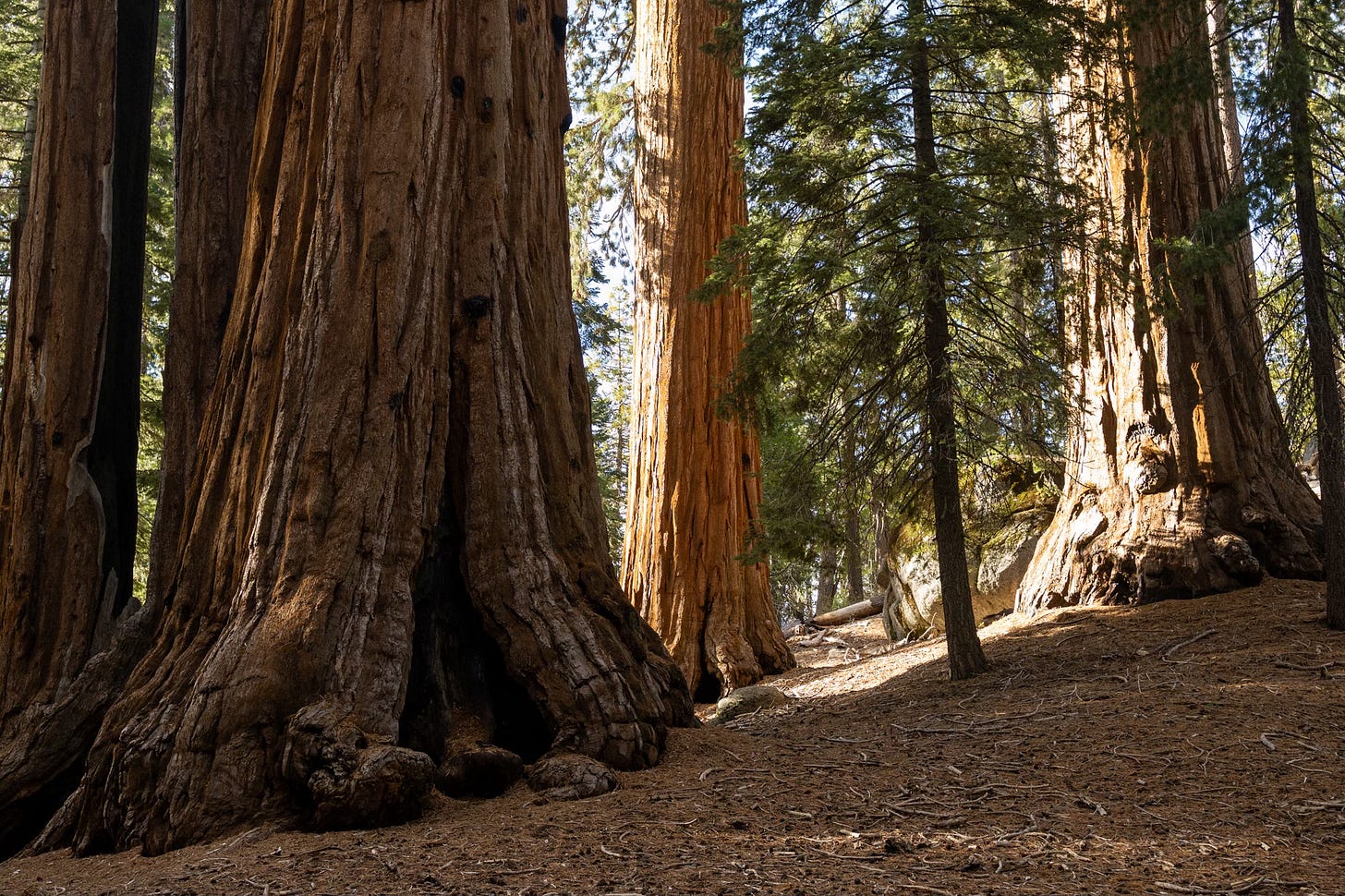

We didn’t let a road closure keep us from exploring. After taking several turns that appeared to be the end of the park road, we popped out onto Hume Lake Road and followed this pothole lined, gravel covered ridge along the backside of the mountain that houses Sequoia NP. From that road, you can look directly down into the namesake canyon of King’s Canyon and see how highway 180 wraps down through the valley to get there.
Hume Lake Road takes you through an icy forest to Hume Lake. It’s an old logging reservoir that was built in 1908 by damming up Tenmile Creek and flooding Long Meadow. It’s now home to a large Christian camp, summer boating and fishing, and winter sledding.
It being only half full was a poetic nod to how this lake shouldn’t naturally exist. And seeing this within Sequoia National Forest is the type of fun reminder that the water I’m drinking as I write this comes from Hetch Hetchy, the valley in Yosemite National Park that was dammed and flooded in order to provide San Francisco with drinking water but stole from us a meadow that John Muir described as more beautiful than Yosemite Valley. Thank God we now have the National Park Service Organic Act, which is intended “to conserve the scenery and the natural and historic objects and the wild life therein and to provide for the enjoyment of the same in such manner and by such means as will leave them unimpaired for the enjoyment of future generations.”
At the end of the last day, as we made our way back up the mountain to our lodge, the sun burned off the fog and we were gifted this sunset over the foothills below the park. These are the layers of mountains that you dream of seeing every day.





